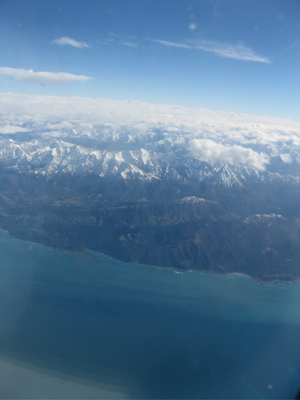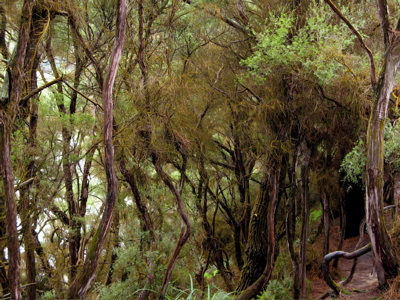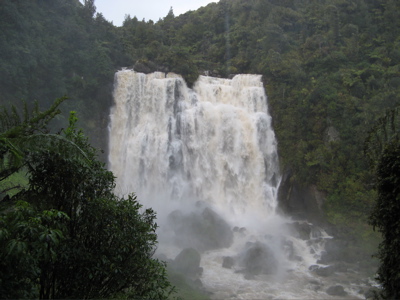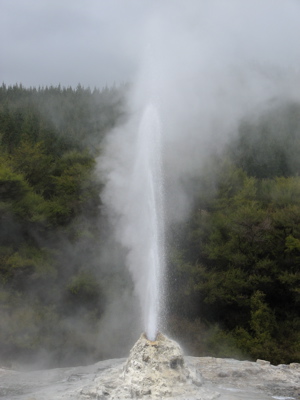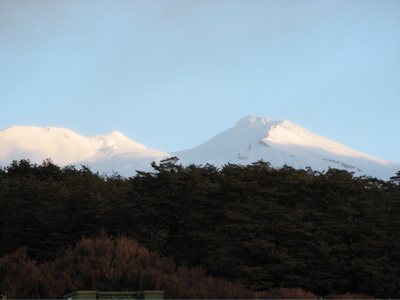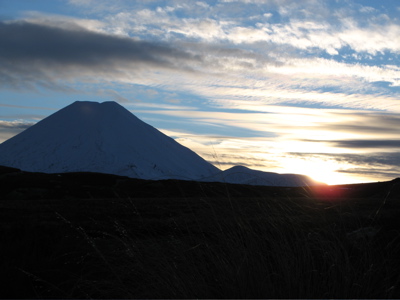New
Zealand : North Island
We arrived
in Auckland very early (5.30 am) on
a rainy
morning. We headed
off immediately toward Waitomo and
its limestone caves; with a detour to see a kiwi -- VERY cute, but she
(Atu) lives
in a darkened enclosure, so we can't share a good photo of her.
We adjusted fairly well to driving on the opposite side of
the
road, while severely jetlagged after 30 hours or so of travel!
WAITOMO
Waitomo
is famous for its caves, and even more famous for the caves'
mysterious inhabitants: the glow-worms. These
"worms" are actually light-producing insects. They
give off light, which transforms the cave roof into a starry
night. Spectacular!
This tricks
moths and other insects into flying up toward the "sky" where they are
trapped by the glow-worms' "webs" (that look more like strings of
pearls
hanging from the roof of the cave), and then eaten. It was amazing how
much light was created by these creatures, especially bright when our
eyes adjusted to the darkness.
The usual boat-rides through the caves were cancelled due to the
torrential rain that had flooded most of the caves. But we managed to
climb through two caves, which were even more interesting with the
water cascading down over the formations and raining on our heads. Our
guide was a serious cave-geek, and very funny.
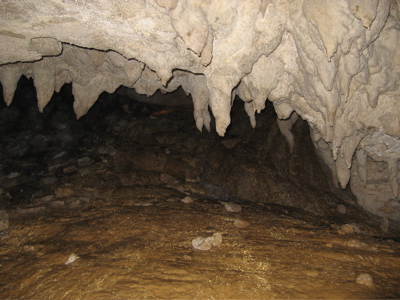
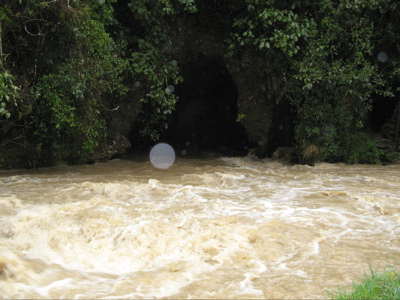
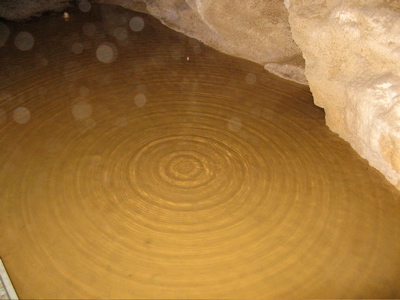
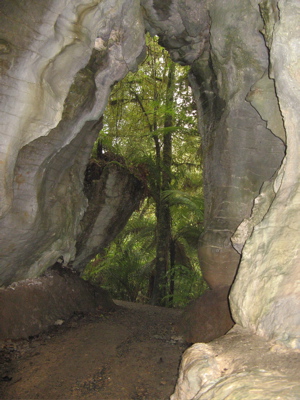
We took many hikes
during
our two weeks in New Zealand, each more beautiful than the last. In
most of the forests (on both islands, actually), every inch
(centimetre?) was covered in moss and lichen in an unreal, almost
fluorescent green! The tree ferns often towered above us (this is
a mini-one that is about Gerald's height), and the trees' branches
twisted in all directions. It made it spooky at some points,
but
mostly a lot of fun.
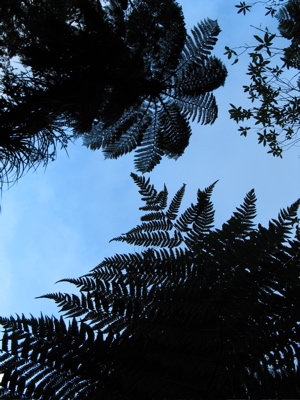
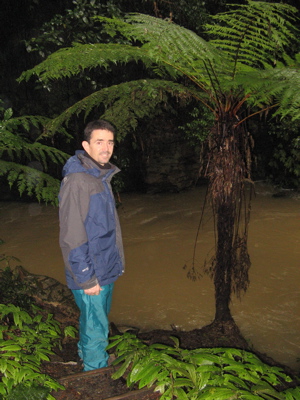
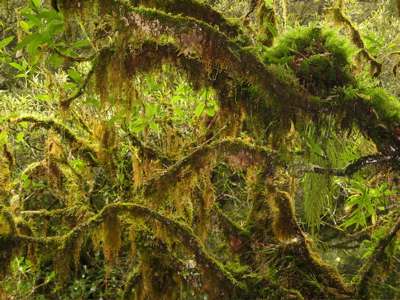
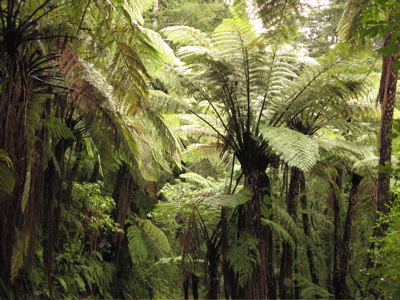
And
there were waterfalls everywhere!
This was
one of our first; we were blown away by its height and the force and
amount of water flowing over it.
THERMAL AREAS OF ROTORUA
As
we headed south, in heavy four-legged traffic, our next stop was the
thermal area around Rotorua. We knew we were
getting close when the sulphur smell creeped into the car! In
addition to smelling the sulphur, we saw mud
bubbling and the earth steaming, and heard the sizzle and pop of hot
spots. The most colorful views were in Waiotapu, but Craters
of
the Moon was very dramatic. The old bathhouses in
Rotorua
were quite impressive.
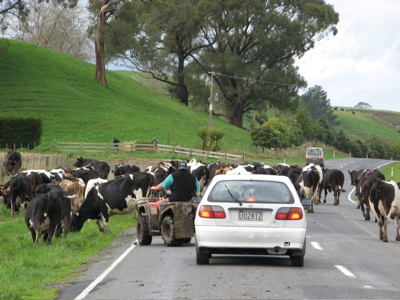
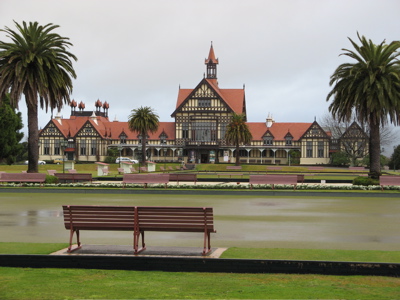
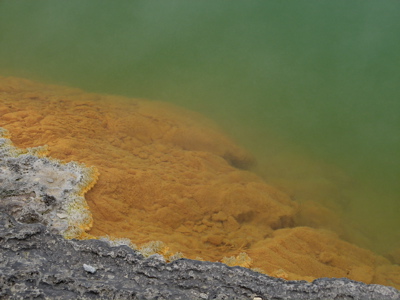
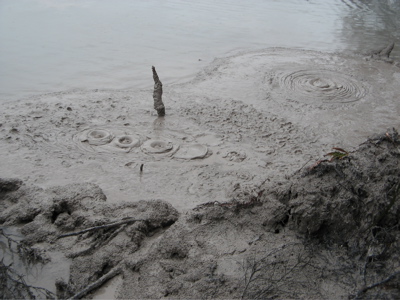
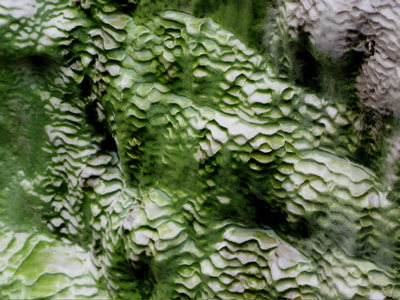
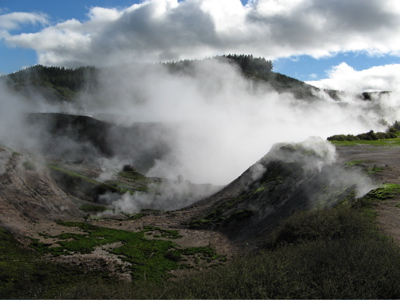
We
were intrigued by the guide book's claim that
there was a geyser that erupted daily at 10:15 a.m. Hmm, how do geysers
keep track of the time? How, we
thought, could it be so regular, not even adjusting itself by the
season? And what about daylight saving? We discovered it's because they
CHEAT and "prime" the
geyser with some baking soda that causes an eruption! Ah well, it
was beautiful to watch anyway.
We made an evening visit to a Polynesian Spa and lounged in four
different outdoor hot pools, with water temperatures up to 100 degrees
(but very cold
air temperatures). It was relaxing, but very smelly, so it
was
somewhat of a relief to get out and breathe the freshER air.
MAORI
VILLAGE : Rotorua
We took advantage of the
opportunity to explore the Maori culture a bit
with an evening Hangi. After a brief presentation in town, we were
driven to a local Maori village.
Our tour guide/bus driver (with a name 47 letters
long!)
was very funny and mulitlingual: he translated "Kia Ora" (welcome/happy
life) for us into about 60 different languages and explained
some Maori
traditions (like the touching of noses/sharing of breath as a sign of
friendship). We experienced one when we arrived; a welcoming
ceremony that
included a quite aggressive traditional challenge by the chief of the
village to the visiting "chiefs" (male tourists chosen from each
bus) to ensure they were coming in peace. Then we went into
the
main hall for a performance of songs, dances and stories. It
was
beautiful, interesting and fun. The visit ended with a meal
cooked like a clam bake - all underground with hot rocks steaming the
food. It was delicious. The wood carvings can seem quite
menacing in the firelight, but they are beautiful, as are the jade
carvings for which the Maori are well-known. The bus ride
home
included the singing of national athems from the many countries
represented on the bus (including a particularly beautiful rendition of
the Welsh anthem) ... along with "The Wheels on the Bus". A
wonderful evening.
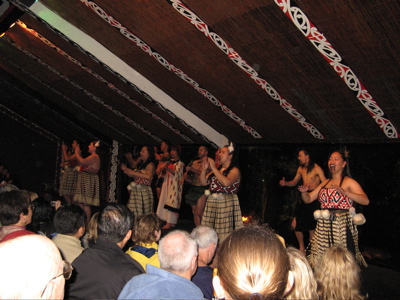
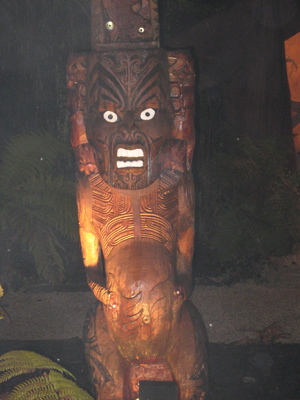
HUKA FALLS
Our drive
to Tongariro National Park (and the mountains/volcanoes there) took
us by Huka Falls. In addition to the spectacular color of the
water, the sheer volume of water rushing through this
narrow chasm is awesome: 210 cubic meters per SECOND! There were jet
boats taking people
much closer to the falls than we would want to be!
Periodically, folks
have tried to kayak over the falls - often with fatal results.
We decided that sometimes it's best to observe Mother Nature
from afar....
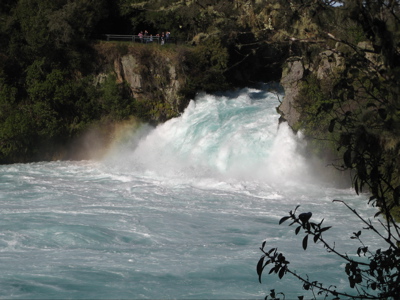
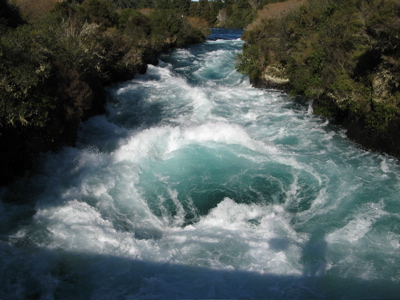
THE
MOUNTAINS : TONGARIRO NATIONAL PARK
We
decided to
take our chances with the weather (heavy snow) and road conditions, and
head to Tongariro National Park, home to Mt. Ruapehu, the mountain that
exploded in 1996, literally blowing its top off (left). There
had been snow a few days before (and the
roads had been closed), but we had sunny conditions and some
spectacular hiking. We (okay, Gerald) woke up before sunrise
the next morning so we were able to sneak in an extra hike before
breakfast and were rewarded with breathtaking views of Mt. Ngauruhoe
(below, right).
After
breakfast we went up to the Silica Rapids where we were surrounded by
waterfalls and vegetation of varying colors (rust, gold, green and
yellow). The water colours differed based on
the minerals of the stone. It was spectacular and wonderfully relaxing.
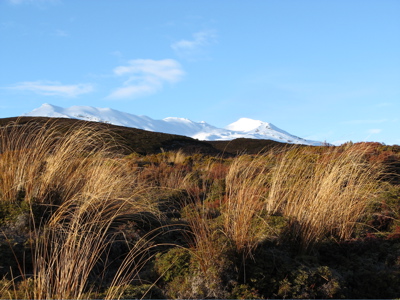
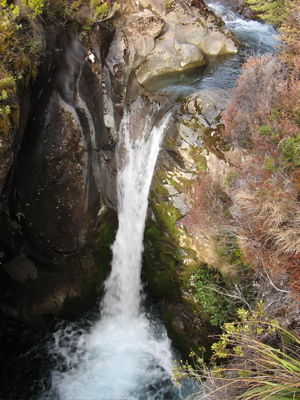
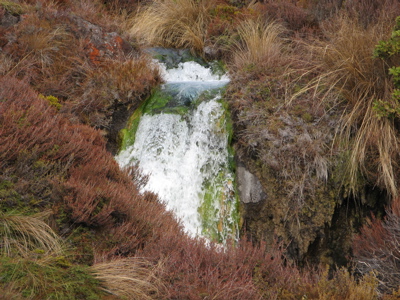
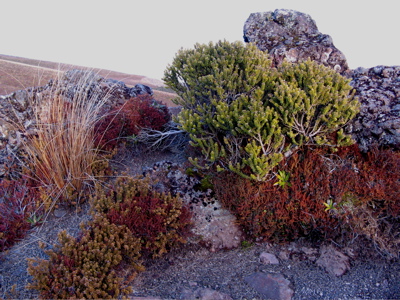
OHAKUNE
We made one
last stop before reaching
our final destination (on the North Island) of Palmerston North.
This was a hike off a steep mountain road to Waitonga Falls,
which are 63 meters (about 190 feet) high. It was a mental
adjustment to be walking in (and on) snow in the middle of July, but it
was peaceful and beautiful. We WERE glad that we had brought
our
gloves, hats and long undies, though. Brrrrr!
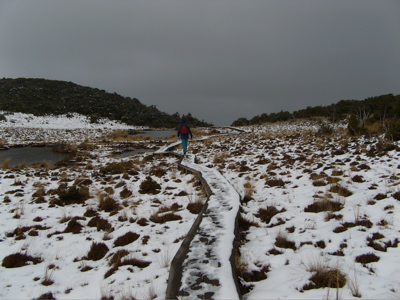
It
was wonderful to visit friends, Tony and Helen Signal and
family, in
Palmerston North (north of Wellington). Gerald gave a talk at Massey
University while
Helen took Elyse for a tour around town, including their son Thomas's
school. In the evening we
went to the glorious Regent Theatre for a community production of
"Oliver!", because Thomas was in it. It was a lot of fun --
and Elyse didn't sing
along (out loud) too much!
In addition to the "stops" along the way, most of the drives we took
afforded us beautiful views of fertile, green hills dotted with sheep
and cows. The hills looked almost folded at times, and
reminded
us of Scotland. Not bad for what's supposed to be the uglier
of
the two islands of New Zealand!
We flew from Palmerston
North to
Dunedin (at the southern end of the South Island) via Wellington.
The flight from Palmerston North to Wellington was very
unsettled. Lots of gripping the seat and focusing on keeping
our
stomachs inside. But we did have some spectacular views,
which
whet our appetite for our second week, on the South Island.
